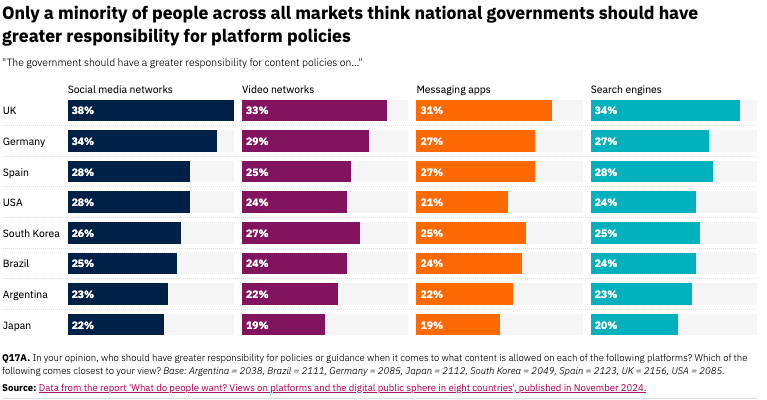The 283rd Block: The online marketplace
And thoughtful translations
This week…
Your reading time is about 5 minutes. Let’s start.
Guys, I blew up the silhouette of the Saja Boys from the scene of the Your Idol performance and printed it on multiple A4 papers and I have to do arts and crafts for the coming few days as I cut and tape and hang them on the window facing the street for Halloween. Our curtain is Gwi-Ma’s colour. I think it’s going to work. But it’s a lot of work. I’m going to be busy.
(If you don’t know what I’m talking about, you need to watch Kpop Demon Hunters.)
Your Wikipedia this week: Dark store
And now, a selection of top stories on my radar, a few personal recommendations, and the chart of the week.
ICYMI: The Previous Block was about money and sicne.
CORRECTION NOTICE: In last week’s edition, the link to one of the stories was broken. These have been corrected in the web version.ONLINE COMMERCE
Social media and Southeast Asian youth’s solidarity beyond borders
Panarat Anamwathana and Iim Halimatusa’diyah for Fulcrum:
At the end of August, large-scale demonstrations erupted across Indonesia. These were initially sparked by public outrage over high salaries and generous perks for legislators, deemed as disproportionate to their lacklustre performance and reflecting broader inequalities. The protests escalated after the death of motorcycle delivery (ojol) driver Affan Kurniawan, who was brutally hit and killed by a mobile police brigade van on 28 August 2025.
To show their sympathy for this protest movement, netizens across the region donated to various organisations and expressed solidarity through hashtags like #SEAblings (a play on “Southeast Asian siblings”). This is a continuation of their use of social media to organise, disseminate information, and rally support in other regional popular movements. For instance, organisers and supporters of the 2020 pro-democracy protests in Thailand and the 2021 Spring Revolution against the Myanmar junta utilised X (previously Twitter), Facebook, and TikTok to effectively mobilise crowds and deliver messages to their countrymen and the rest of the world. This allowed people outside Thailand and Myanmar to express support for the protests, and even led to multinational online movements like the Milk Tea Alliance. Crowdfunding platforms and online donations provided vital channels for overseas support.
The supporters of the latest Indonesian protests took regional online support a step further. Many in Malaysia, the Philippines, and Thailand used delivery applications like Grab and Gojek to order food, first aid kits, and other necessities, instructing ojol drivers to keep the delivered goods and meals, or to distribute them to their communities and those in need. Guides on how to do this were speedily translated into many regional languages, going viral on social media platforms. For instance, one tweet from a Thai user from 30 August had (at the time of writing) garnered at least 78,000 reposts and 74 million impressions, an extremely high engagement (for reference, an average tweet in 2024 had just over 2,000 impressions). Numerous replies to that post confirmed that many had followed it to send food and first aid to Indonesian protesters.
Loosely linked:
Livestream shopping stars face off against trolls, hagglers, and AI rivals by Linda Yulisman for Rest of World.
Scammers are using video deepfakes of journalists to peddle products online by Andrew Deck for Nieman Lab.
Sextorters are targeting young boys online — and flaunting how rich the scam is making them by Dexter McMillan, Katie Pedersen, and Asha Tomlinso for CBC.
DIGITAL THOUGHTS
How real-time translation could transform travel – and what we might lose
Daniel Siefert for BBC:
For nearly five decades, a comedy sci-fi novel has made readers wish they had a fish in their ear. In Douglas Adams’s The Hitchhiker’s Guide to the Galaxy, characters could understand any language thanks to the petite (and sadly fictional) Babel fish. “If you stick a Babel fish in your ear you can instantly understand anything said to you in any form of language,” Adams wrote.
Now that sci-fi dream is edging closer to reality with Apple’s new AirPods Pro 3, which promise live translation. According to the company, users can listen to conversations in a variety of foreign languages and hear translated words in their ears, while transcripts appear on their phone screen – all without the need for an alien fish transplant.
At face value, this has the potential to power a new era of friction-free travel, changing the way we navigate foreign restaurants, make friends abroad or ask for directions in an unfamiliar city. But will instant fluency come with hidden costs?
Loosely linked:
AI translation program raises questions for workers and language rights by Matteo Cimellaro for Ottawa Citizen.
‘Digital brains’ that ‘think’ and ‘feel’: why do we personify AI models, and are these metaphors actually helpful? by Xosé López-García (Universidade de Santiago de Compostela) and Cristian Augusto Gonzalez Arias (Pontificia Universidad Catolica de Valparaiso) for The Conversation.
Title translation in documentary films: a reception study by Hala Sharkas, Mohammed Al-Batineh, Nouf Alhassani, Hamda Alrashdi, and Salama Alneyadi for Nature.
Other curious links, including en español et français

LONG READ | Extremely offline: what happened when a Pacific island was cut off from the internet by Samanth Subramaniam for The Guardian.
INTERACTIVE | The cost of mining Asia’s transition minerals to power the global energy transition by Gwyneth Cheng for Kontinentalist.
PHOTO GALLERY | Drone nets, boarded windows and risk of sudden death: Scenes from Ukraine’s frontline towns by Reuters.
Meloni, año III por Steven Forti en CTXT.
Así conseguí que el Museo Arqueológico cambiara el dibujo (sexualizado) de una mujer del neolítico por Mara Mariño en elDiario.es.
La rebelión de los jubilados por Laura Guarinoni, fotografía de Anita Pouchard Serra en Gatopardo.
C’est quoi l’extrême droite? par Sam Harper dans Pivot.
« Tout sera dans la presse » : le secret de l’instruction à l’épreuve du tourbillon médiatique par Clara Lainé dans La revue des médias.
Game of drones : pourquoi la guerre en Ukraine s’est hybridée avec le jeu vidéo ? par David-Julien Rahmil dans L’ADN.
What I read, listen, and watch
I’m reading How Infrastructure Works (2023) by Deb Chachra. I guess if you wonder why progressive change seems slow (transit, clean energy, etc.) this would be a good read
I’m listening to Paris Marx’s Tech Won’t Save Us with Tina Nguyen on the MAGA-Big Tech relationship.
I’m watching Al Jazeera’s The Take on a livestreamed femicide that rocked Argentina.
Chart of the week
Most people want platforms (not governments) to be responsible for moderating content according to a RISJ study in eight countries in collaboration with the Knight Foundation.



